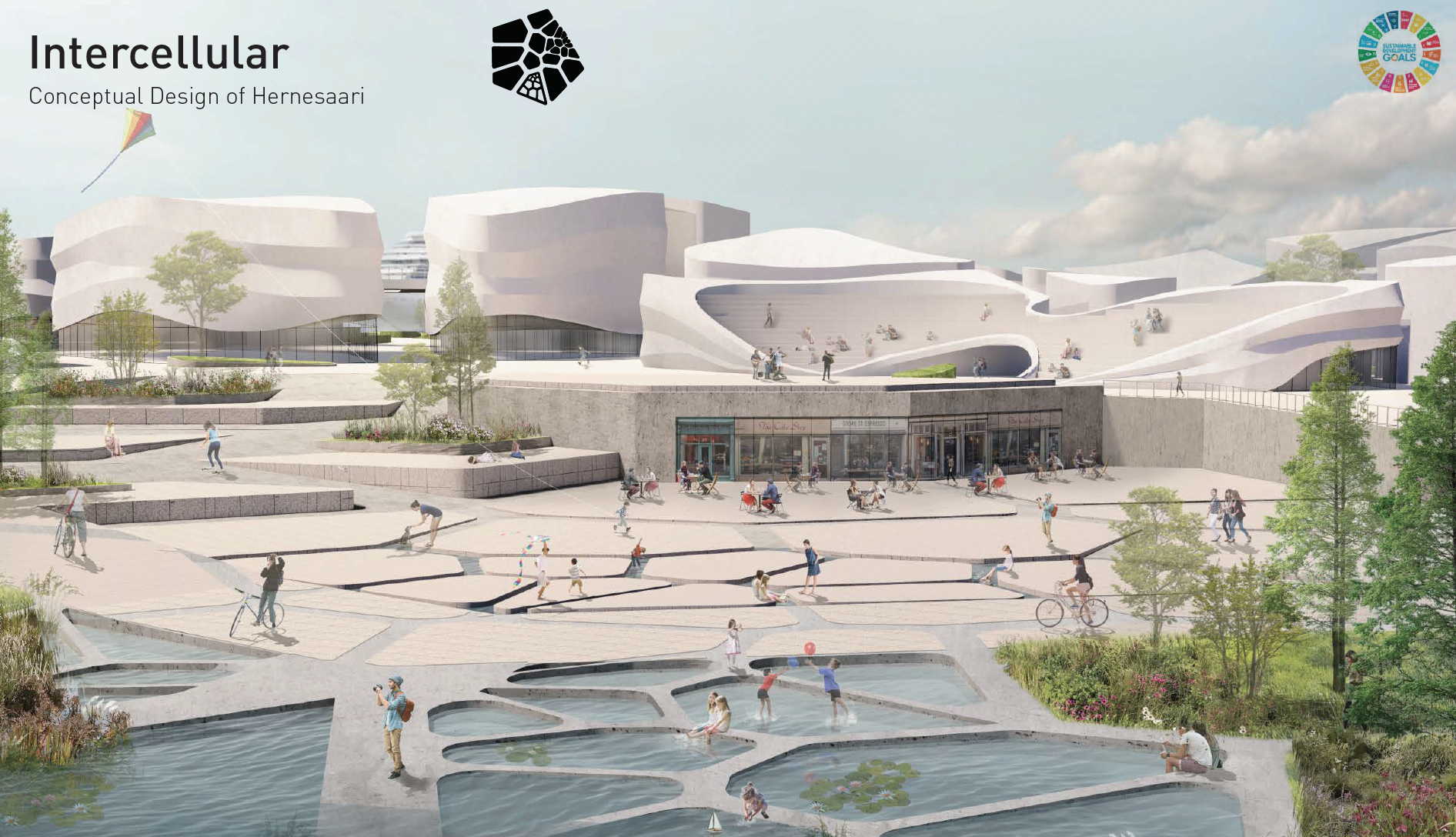
Intercellular
Computational Territories & Design of Structures
Aalto University
Hernesaari, a former industrial area, located in the southernmost part of the downtown area of Helsinki (Finland), served as a test case for the speculative computational design studio at the interface of landscape architecture and urban design. The project “Intercellular”, proposes a future-oriented way of designing responsive urban landscapes through the understanding and integration of natural patterns as design driver. In order to create responsive urban strategies, the project avoids conventional zoning methods and applies computational design methods for mixing form and functions into a new sustainable spatial configuration. The zoning of the site is controlled by a cellular system, using both the history, the present and a speculative future situation as visionary input parameters. Applying this method, a highly flexible land system is generated to realize multi-purpose functions, merging environmental aspects with a future-oriented strategy. The topography of the articulated ground condition is automatically generated and influenced by environmental factors like rain, wind and sun direction. Through this open-ended method the runoff water (rain and melting snow water) is purified in responsive water catchment areas, which as well interact as a mediator for different seawater levels. A systemic interplay of people, natural elements and buildings is generated as a logic consequence of the computational model and allows for change and adaption.Pia
